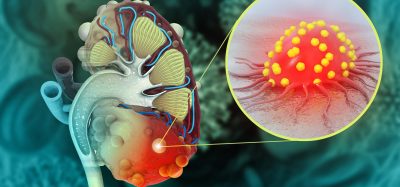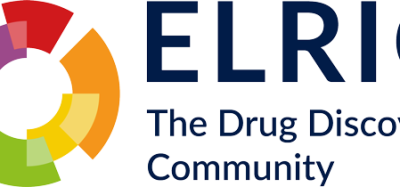Advanced drug development for neurodegenerative diseases with α-synuclein
Posted: 16 April 2025 | Dr Russ Lebovitz | No comments yet
Discover how α-synuclein tests are transforming the diagnosis and treatment of neurodegenerative diseases, offering hope for earlier detection, better-targeted therapies and faster drug development.


Neurodegenerative diseases, affecting approximately 15 percent of the global population, present a significant and growing challenge for healthcare systems worldwide. This broad category includes conditions such as Alzheimer’s disease (AD), Parkinson’s disease (PD), Lewy body dementia (LBD) and amyotrophic lateral sclerosis (ALS), all characterised by the progressive decline of neurological function, resulting in cognitive and motor impairments.
Despite their widespread impact, researchers have long struggled to develop effective therapies for neurodegenerative diseases. The slow progression of these conditions, along with overlapping symptoms, makes early and accurate diagnosis particularly difficult. Often, these diseases remain undetected until irreversible damage has occurred, which limits the potential for effective intervention.
A critical need exists for reliable and minimally invasive diagnostic tools to detect these diseases in their nascent stages. Biomarkers, which reflect the underlying biological changes of a disease, hold significant promise for revolutionising the diagnosis and treatment of neurodegenerative disorders.
This article explores how a promising biomarker, soluble misfolded ɑ-synuclein aggregates, is changing the diagnostic landscape in neurodegenerative disease by ensuring that diseases are identified early and accurately, monitoring disease progression and improving clinical trials. Ultimately, the successful development and application of sensitive and specific biomarkers are crucial for improving patient outcomes in the face of these devastating diseases.
Detecting neurodegenerative disease
Molecular diagnostics offer a promising approach for the early detection of neurodegenerative diseases. By leveraging biomarker tests alongside clinical assessments, providers can more accurately distinguish between diseases with overlapping symptoms and support earlier diagnosis. This, in turn, opens the door to more informed patient care and intervention.
Biomarker tests for neurodegenerative diseases fall into three categories: blood tests, tissue-based tests and cerebrospinal fluid (CSF) analysis.
Biomarker tests for neurodegenerative diseases fall into three categories: blood tests, tissue-based tests and cerebrospinal fluid (CSF) analysis. Blood tests are generally less invasive but often lack sensitivity and specificity with respect to processes in the brain. Key neurodegenerative biomarkers are often present in lower concentrations in peripheral blood, and even when detected, they may reflect a pathology outside the central nervous system (CNS). This can lead to both false-negative and false-positive results.
In contrast, cerebrospinal fluid is a more reliable source for identifying biomarkers specific to neurodegenerative diseases, such as p-Tau217, p-Tau181, amyloid-β and α-synuclein. Tissue-based biomarkers for neurodegenerative diseases, such as skin tests, are often used as research tools. Those available on the market generally exhibit a similar lack of sensitivity and specificity as blood tests. As these tests evolve to increase sensitivity and specificity, tissue-based biomarkers may serve as excellent non-invasive alternatives or complementary assays in the future. However, all biomarker assays must meet the rigorous gold standard of pathology-confirmation to ensure accuracy and reliability.
What is α-synuclein?
α-synuclein is a protein predominantly found in neurons. Although work remains ongoing to understand its exact physiological function, normal α-synuclein is presumed to be involved in numerous neuronal processes, such as the trafficking of synaptic vesicles and the release of neurotransmitters.
Normal α-synuclein is presumed to be involved in numerous neuronal processes, such as the trafficking of synaptic vesicles and the release of neurotransmitters.
However, under certain pathological conditions α-synuclein misfolds and aggregates, forming insoluble structures known as Lewy bodies and Lewy neurites. These are hallmark features of diseases like Parkinson’s disease, dementia with Lewy bodies and Multiple system atrophy. The abnormal accumulation of α-synuclein disrupts normal cellular functions, resulting in neuronal dysfunction and cell death. Neurodegenerative diseases associated with Lewy bodies and neurites are referred to collectively as synucleinopathies.
The complex role of α-synuclein – from its normal physiological activities to its pathological aggregation and contribution to neurodegeneration – makes it a promising and highly predictive biomarker. By using the presence of misfolded α-synuclein aggregates as a marker for neurodegenerative diseases, we can better inform strategies for diagnosis, treatment and, ultimately, prevention of these debilitating conditions. As it stands the detection of misfolded α-synuclein is the only reliable biomarker for synucleinopathies.
Detecting α-synuclein
The ability to detect accumulated misfolded α-synuclein is crucial for understanding its role in disease progression and for facilitating early and accurate diagnosis. However, for this biomarker to be truly effective, its detection must meet several rigorous criteria:
- Standardisation: ensuring consistency across different testing platforms
- Specificity & sensitivity: accurate and reliable detection
- Accessibility: allowing widespread use in both research and clinical settings.
Meeting these benchmarks is essential for translating the detection of misfolded α-synuclein into a valuable tool for managing neurodegenerative diseases.
One promising approach to achieve this goal is seed amplification assays (SAAs). These innovative tests enable rapid and reliable detection of misfolded α-synuclein and are the most reliable method for detecting misfolded synuclein. By harnessing the property of misfolded proteins to act as ‘seeds’ that trigger further misfolding and aggregation of normal proteins, these assays can amplify minute quantities of misfolded α-synuclein in biological fluids, such as CSF, to detectable levels. This increased sensitivity is particularly important for detecting diseases early in progression, when the levels of misfolded proteins may be low.
Effectively detecting misfolded α-synuclein aggregates has significant utility across a range of synucleinopathies. Reliable and accessible detection methods could transform the landscape for these debilitating conditions, paving the way for earlier interventions and the development of targeted therapies. SAA has shown to be particularly effective in predicting the presence or absence of Lewy bodies and neurites in the brain. Moving forwards, any new biomarker tests for neurodegenerative diseases must be validated against pathology before gaining wide acceptance.
α-synuclein tests reshaping the clinic
Diagnosis
α-synuclein SAA tests have the potential to transform the clinical management of neurodegenerative diseases by significantly improving diagnostic accuracy. Early detection of these progressive conditions is crucial, as it expands opportunities for potential interventions that may slow down or halt disease progression. Currently, overlapping symptoms often complicate timely diagnosis, leading to delays in treatment. In general, symptoms reflect the specific brain regions that are damaged, while disease-related biomarkers can identify the specific molecular processes responsible for the damage and can drive the development of specific disease-modifying therapies.
Accurate diagnosis is vital to ensure that patients receive appropriate intervention and to avoid the risks associated with unnecessary or incorrect treatments. By offering a more precise and timely diagnosis, α-synuclein SAA tests can help clinicians choose appropriate treatment strategies, moving away from a trial-and-error approach. Synuclein SAA CSF tests are currently available for patient diagnosis. Blood and tissue-based synuclein SAA tests are in active clinical development.
Discovery
α-synuclein SAA tests also hold promise to transform drug discovery and development in neurodegenerative diseases. Developing treatments for these conditions relies heavily on broad categories of observable clinical symptoms rather than a deep understanding of the underlying pathological mechanisms distinct to each patient’s case. This symptom-driven approach has notable limitations, as it can fail to adequately stratify distinct pathologies and address the root causes of disease.
α-synuclein SAA testing offers a valuable shift in this paradigm, moving towards a more targeted and personalised approach to treating neurodegenerative diseases. In oncology, therapies are often selected based on specific biomarkers present in a patient’s tumour, increasing the likelihood of efficacy. By identifying individuals with specific misfolded α-synuclein pathology, researchers can better stratify cases and develop therapies tailored to the unique molecular characteristics driving each patient’s condition.
This precision medicine approach aims to minimise off-target effects and enhance patient outcomes by ensuring the proper treatment is delivered to the right patient at the right time. Additionally, these tests can facilitate the development of novel therapeutic strategies focused on preventing α-synuclein misfolding or promoting its clearance, potentially halting or slowing disease progression.
Clinical trials
α-synuclein SAA tests offer significant advantages for clinical trials focused on neurodegenerative diseases. These tests enhance patient selection by ensuring that participants have the specific pathology targeted by the investigational therapy. This targeted approach increases the likelihood of observing a treatment effect and reduces variability by excluding individuals without the relevant pathology. Additionally, α-synuclein tests can be used to monitor disease progression during clinical trials, providing valuable data on the therapy’s impact on the underlying disease process. This objective and longitudinal measurement of disease progression can help accelerate the development of effective treatments and provide critical insights into the pathophysiology of these complex disorders.
Overall, α-synuclein SAA shows excellent promise as a transformative biomarker in the fight against neurodegenerative diseases. Its potential to support timely and accurate diagnosis is crucial for enhancing patient outcomes. These assays are positioned to improve drug discovery and development, empowering a shift to targeted therapies based on individual pathology rather than generalised symptoms. Additionally, their use in refining clinical trials could speed up the development of effective treatments. The development of α-synuclein SAA biomarker tests provide hope for earlier diagnosis, more effective treatments, and a brighter future for those affected by the devastating impact of neurodegenerative diseases.
Meet Russ Lebovitz


Dr Russ Lebovitz is a biotech executive with expertise in managing diagnostics companies from R&D to commercial launch. He has led global projects for Fortune 100 companies and start-ups, building strategic partnerships with pharmaceutical companies and top clinicians.
Before his management career, Lebovitz spent over 15 years as a senior scientist and research physician. He has served on the faculty of Baylor College of Medicine and Fox Chase Cancer Center. A champion for brain health, he works closely with the Alzheimer’s Drug Discovery Foundation and leads research efforts with organisations like the Michael J. Fox Foundation and ALS Association. Lebovitz has appeared on over 20 brain health podcasts, advocating for early detection. He holds MD and PhD degrees from Washington University School of Medicine.








